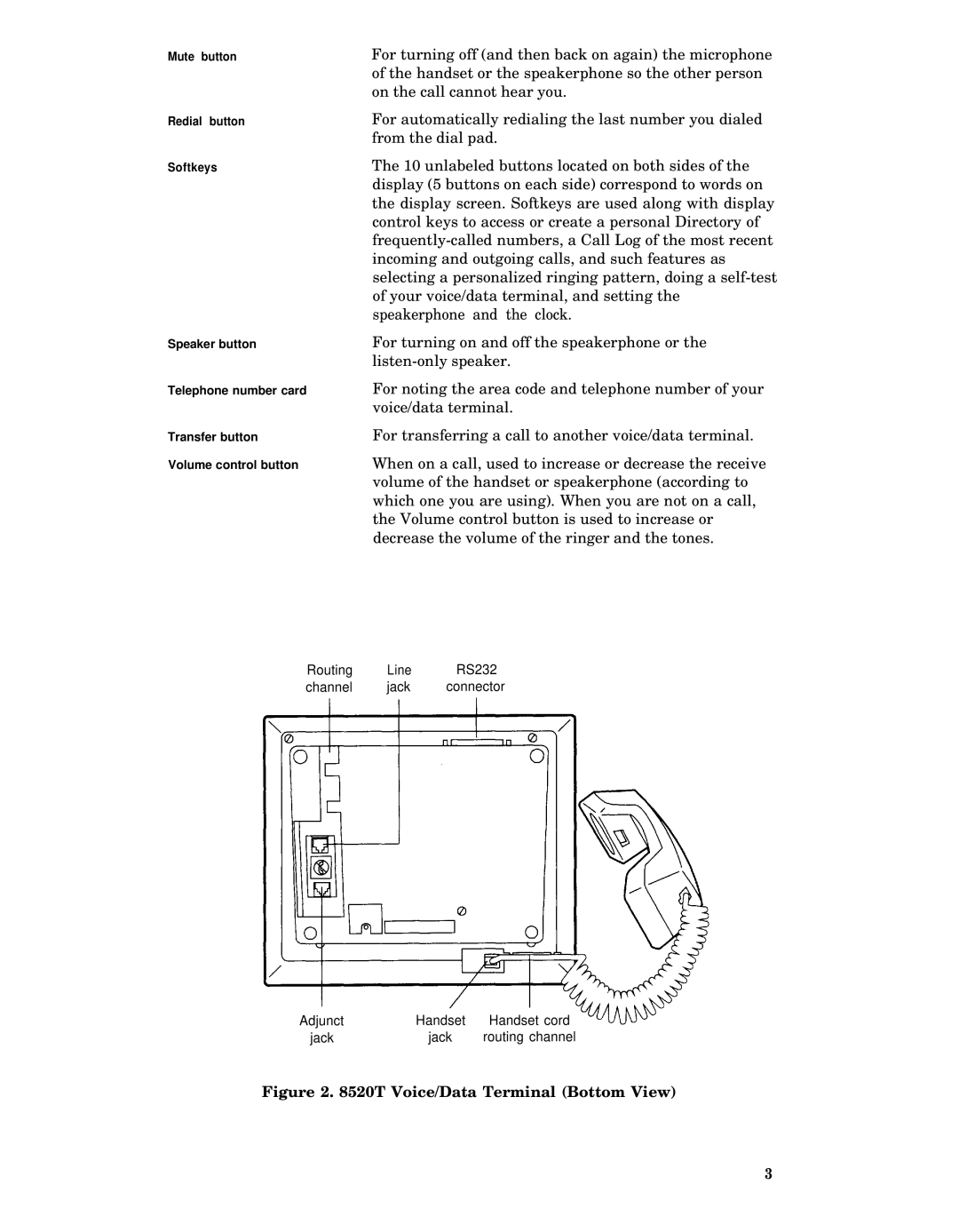
Mute button | For turning off (and then back on again) the microphone |
| of the handset or the speakerphone so the other person |
| on the call cannot hear you. |
Redial button | For automatically redialing the last number you dialed |
| from the dial pad. |
Softkeys | The 10 unlabeled buttons located on both sides of the |
| display (5 buttons on each side) correspond to words on |
| the display screen. Softkeys are used along with display |
| control keys to access or create a personal Directory of |
| |
| incoming and outgoing calls, and such features as |
| selecting a personalized ringing pattern, doing a |
| of your voice/data terminal, and setting the |
| speakerphone and the clock. |
Speaker button | For turning on and off the speakerphone or the |
| |
Telephone number card | For noting the area code and telephone number of your |
| voice/data terminal. |
Transfer button | For transferring a call to another voice/data terminal. |
Volume control button | When on a call, used to increase or decrease the receive |
| volume of the handset or speakerphone (according to |
| which one you are using). When you are not on a call, |
| the Volume control button is used to increase or |
| decrease the volume of the ringer and the tones. |
Routing Line RS232
channel jack connector
Adjunct | Handset | Handset cord |
jack | jack | routing channel |
Figure 2. 8520T Voice/Data Terminal (Bottom View)
3
